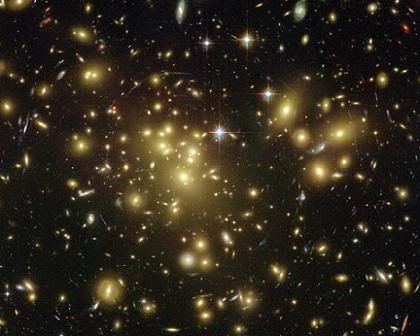Post by glactus on Mar 26, 2010 18:14:10 GMT

part of the Universe in deep space
Astronomers may have underestimated the tally of galaxies in some parts of the Universe by as much as 90 percent, according to a study reported on Wednesday in Nature, the weekly British science journal. Surveys of the cosmos are based on a signature of ultraviolet light that turns out to be a poor indicator of what's out there, its authors say.
In the case of very distant, old galaxues the telltale light may not reach Earth as it is blocked by interstellar clouds of dust and gas -- and, as a result, these galaxies are missed by the map-makers.
"Astronomers always knew they were missing some fraction of the galaxies... but for the first time we now have a measurement. The number of missed galaxies is substantial," said Matthew Hayes of the University of Geneva's observatory, who led the investigation.
Hayes' team used the world's most advanced optical instrument -- Europe's Very Large Telescope (VLT) in Chile, which has four 8.2-metre (26.65-feet) behemoths -- to carry out the experiment.
They turned two of the giants towards a well-studied area of dep space called the GOODS-South field.
The sweep yielded a whole bagful of light sources that had not been spotted using the Lyman-alpha technique.
They include some of the faintest galaxies ever found, forged at a time when the Universe was just a child.
. "If there are 10 galaxies seen, there could be a hundred there," said Hayes.
The discovery could add powerfully to knowledge about the timeline by which stars and then galaxies formed.
Credits: Image: This is a NASA/Hubble image
This is part text only. See full text and all scienits involed at SpaceDaily.com
www.spacedaily.com/reports/Cosmos_has_billions_more_stars_than_thought_999.html


